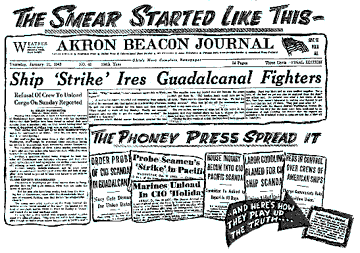

Today was the last day of publication for the Rocky Mountain News. The Rocky isn't struggling financially any more than the Denver Post, says Rocky editor John Temple. "But its owner, the E.W. Scripps Co., sees losses in Denver worsening and little prospect that the business can be turned around, even in a one-newspaper town. That's why they decided to leave Denver, after running newspapers here for more than 100 years."
Reprinted below is the goodye message on the final edition of February 27, 2009
We also show the regular front page.
Columbia Journalism Review is collecting comments from staffers.
Poynter online has a number of links to fetures on the last day of publication. Don't miss the video.
Here also is a lnik to nice array of front pages from the Rocky
It is with great sadness that we say goodbye to you today. Our time chronicling the life of Denver and Colorado, the nation and the world, is over. Thousands of men and women have worked at this newspaper since William Byers produced its first edition on the banks of Cherry Creek on April 23, 1859. We speak, we believe, for all of them, when we say that it has been an honor to serve you. To have reached this day, the final edition of the Rocky Mountain News, just 55 days shy of its 150th birthday is painful. We will scatter. And all that will be left are the stories we have told, captured on microfilm or in digital archives, devices unimaginable in those first days. But what was present in the paper then and has remained to this day is a belief in this community and the people who make it what it has become and what it will be. We part in sorrow because we know so much lies ahead that will be worth telling, and we will not be there to do so. We have celebrated life in Colorado, praising its ways, but we have warned, too, against steps we thought were mistaken. We have always been a part of this special place, striving to reflect it accurately and with compassion. We hope Coloradans will remember this newspaper fondly from generation to generation, a reminder of Denver's history -- the ambitions, foibles and virtues of its settlers and those who followed. We are confident that you will build on their dreams and find new ways to tell your story. Farewell -- and thank you for so many memorable years together.












